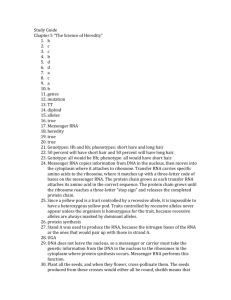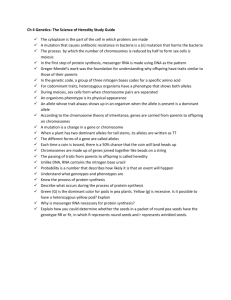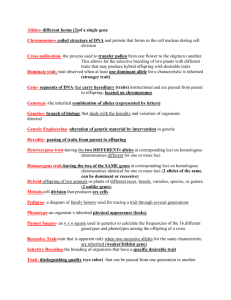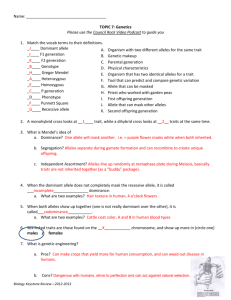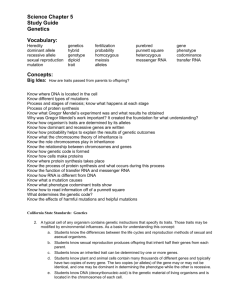Genetics The Science of Heredity Study Guide
advertisement
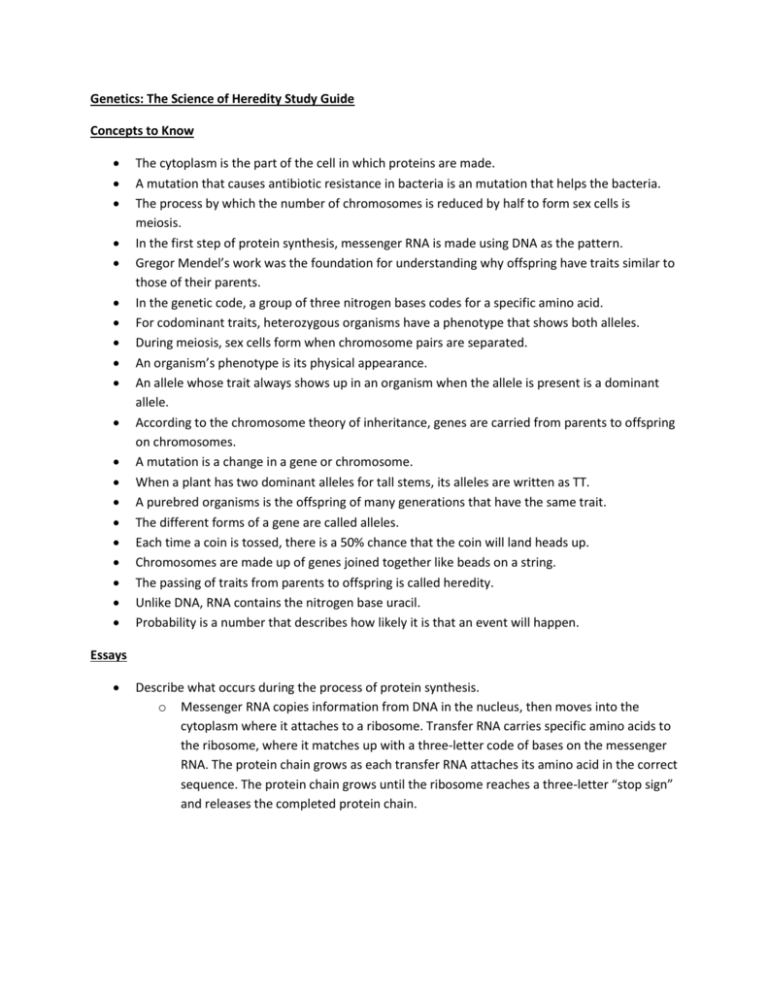
Genetics: The Science of Heredity Study Guide Concepts to Know The cytoplasm is the part of the cell in which proteins are made. A mutation that causes antibiotic resistance in bacteria is an mutation that helps the bacteria. The process by which the number of chromosomes is reduced by half to form sex cells is meiosis. In the first step of protein synthesis, messenger RNA is made using DNA as the pattern. Gregor Mendel’s work was the foundation for understanding why offspring have traits similar to those of their parents. In the genetic code, a group of three nitrogen bases codes for a specific amino acid. For codominant traits, heterozygous organisms have a phenotype that shows both alleles. During meiosis, sex cells form when chromosome pairs are separated. An organism’s phenotype is its physical appearance. An allele whose trait always shows up in an organism when the allele is present is a dominant allele. According to the chromosome theory of inheritance, genes are carried from parents to offspring on chromosomes. A mutation is a change in a gene or chromosome. When a plant has two dominant alleles for tall stems, its alleles are written as TT. A purebred organisms is the offspring of many generations that have the same trait. The different forms of a gene are called alleles. Each time a coin is tossed, there is a 50% chance that the coin will land heads up. Chromosomes are made up of genes joined together like beads on a string. The passing of traits from parents to offspring is called heredity. Unlike DNA, RNA contains the nitrogen base uracil. Probability is a number that describes how likely it is that an event will happen. Essays Describe what occurs during the process of protein synthesis. o Messenger RNA copies information from DNA in the nucleus, then moves into the cytoplasm where it attaches to a ribosome. Transfer RNA carries specific amino acids to the ribosome, where it matches up with a three-letter code of bases on the messenger RNA. The protein chain grows as each transfer RNA attaches its amino acid in the correct sequence. The protein chain grows until the ribosome reaches a three-letter “stop sign” and releases the completed protein chain. Green (G) is the dominant color for pods in pea plants. Yellow (g) is recessive. Is it possible to have a heterozygous yellow pod? Explain. o Since a yellow pod is a trait controlled by a recessive allele, it is important to have a heterozygous yellow pod. Traits controlled by recessive alleles never appear unless the organism is homozygous for the trait, because recessive alleles are always masked by dominate alleles. Why is messenger RNA necessary for protein synthesis? o DNA does not leave the nucleus, so a messenger or carrier must take the genetic information from the DNA in the nucleus to the ribosome’s in the cytoplasm where protein synthesis occurs. Messenger RNA performs this function. Explain how you could determine whether the seeds in a packet of round pea seeds have the genotype RR or Rr, in which R represents round seeds and r represents wrinkled seeds. o Plant all the seeds, and when they flower, cross-pollinate them. The seeds produced from these crosses would either all be round, which means that they original seeds were RR, or some would be round and some would be wrinkled, which means that some of the original seeds were Rr. Students might also suggest that they could cross the plants that grow from the seeds of plants with a know genotype and observe the traits of the offspring.
